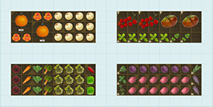How to grow Nectarine?
- Latin Family: Rosaceae
- Latin Genus: Prunus
- Ease of Growing: Moderate
- Growing Type: Perennial
Nectarine, (Prunus persica), smooth-skinned peach of the family Rosaceae that is grown throughout the warmer temperate regions of both the Northern and Southern hemispheres. A genetic variant of common peaches, the nectarine was most likely domesticated in China more than 4,000 years ago, and nectarine and peach trees are virtually indistinguishable. The expression of a recessive allele is thought to be responsible for the smooth skin of nectarine fruits, which lack the fuzzy trichomes (plant hairs) characteristic of peach fruits. The stones and kernels of the two fruits are alike in appearance and may be freestone types, which have ripe flesh that separates easily from the stone, or clingstones, which have flesh that adheres firmly to the stone. Nectarines have red, yellow, or white flesh and are a source of vitamins A and C. They are commonly eaten fresh or cooked in conserves, jams, and pies.
Nectarine History
Soil Preference
How to care for Nectarine?
Water
Fertilizer
Seeds
Seed Viability:
Light
Sun: min. 6 hours daily
six hours per day of sunConditions:Hot
Season:
Problems
Nectarine Types
- Semi-Dwarf
- Standard
Providing beautiful blossoms and fruit with incomparable flavor, nectarines are worth the maintenance it takes to grow them in our climate. There are genetic dwarf nectarines available, which reach about 5 or 6 feet. Semi-dwarfing rootstocks such as St. Julian A will produce trees which will only reach 12-15'.
That is, unless you're considering standard-sized peach and nectarine trees, which will reach 12-15 feet (this may appear to be the range of a semi-dwarf but, because they naturally don't grow very large, it is the 'standard' size for these trees).
